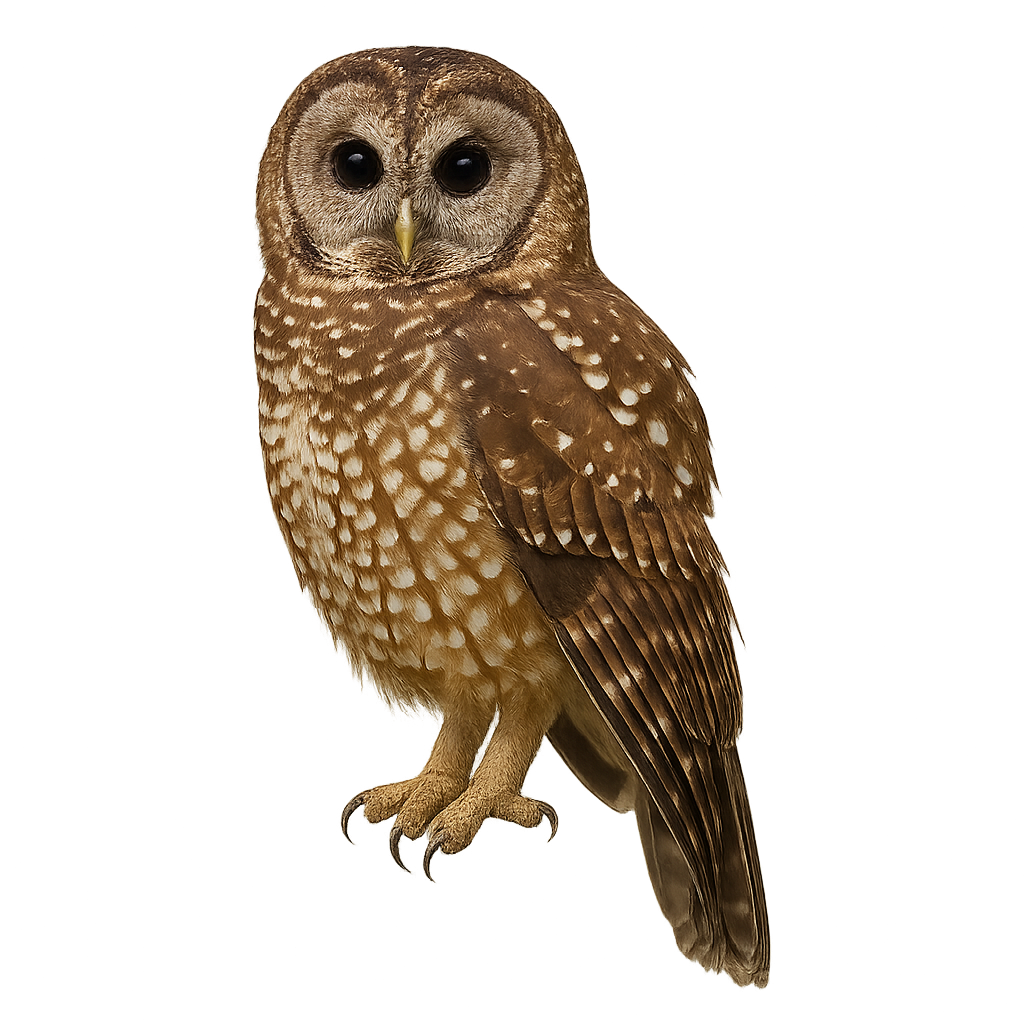Your wildlife photography guide.
Explore the spotted owl in detail, study its behavior, prepare your shots.
Where to observe and photograph the spotted owl in the wild
Learn where and when to spot the spotted owl in the wild, how to identify the species based on distinctive features, and what natural environments it inhabits. The WildlifePhotographer app offers tailored photography tips that reflect the spotted owl’s behavior, helping you capture better wildlife images. Explore the full species profile for key information including description, habitat, active periods, and approach techniques.
Spotted owl
Scientific name: Strix occidentalis

IUCN Status: Vulnerable
Family: STRIGIDAE
Group: Birds
Sensitivity to human approach: Suspicious
Minimum approach distance: 10 m
Courtship display: March to April
Incubation: 28-32 jours
Hatchings: March to May
Habitat:
Dense forests and woodlands
Activity period :
Mainly active at night, generally discreet during the day.
Identification and description:
The spotted owl is a nocturnal owl native to the dense forests of the western United States and Mexico. It is recognizable by its spotted brown plumage, large dark eyes, and round face. It primarily feeds on small mammals, birds, and insects, hunting at night. Threatened by habitat loss, it is protected in certain regions.
Recommended lens:
400 mm – adjust based on distance, desired framing (portrait or habitat), and approach conditions.
Photography tips:
Photograph the spotted owl using a telephoto lens to capture its keen eyes and spotted plumage in the dark forests. It is best to photograph in the late afternoon or dusk, before nightfall. Be patient and remain silent, as these owls are very sensitive to human presence and may flee if they feel threatened.
The WildlifePhotographer App is coming soon!
Be the first to explore the best nature spots, track rutting seasons, log your observations, and observe more wildlife.
Already 1 430 wildlife lovers subscribed worldwide

